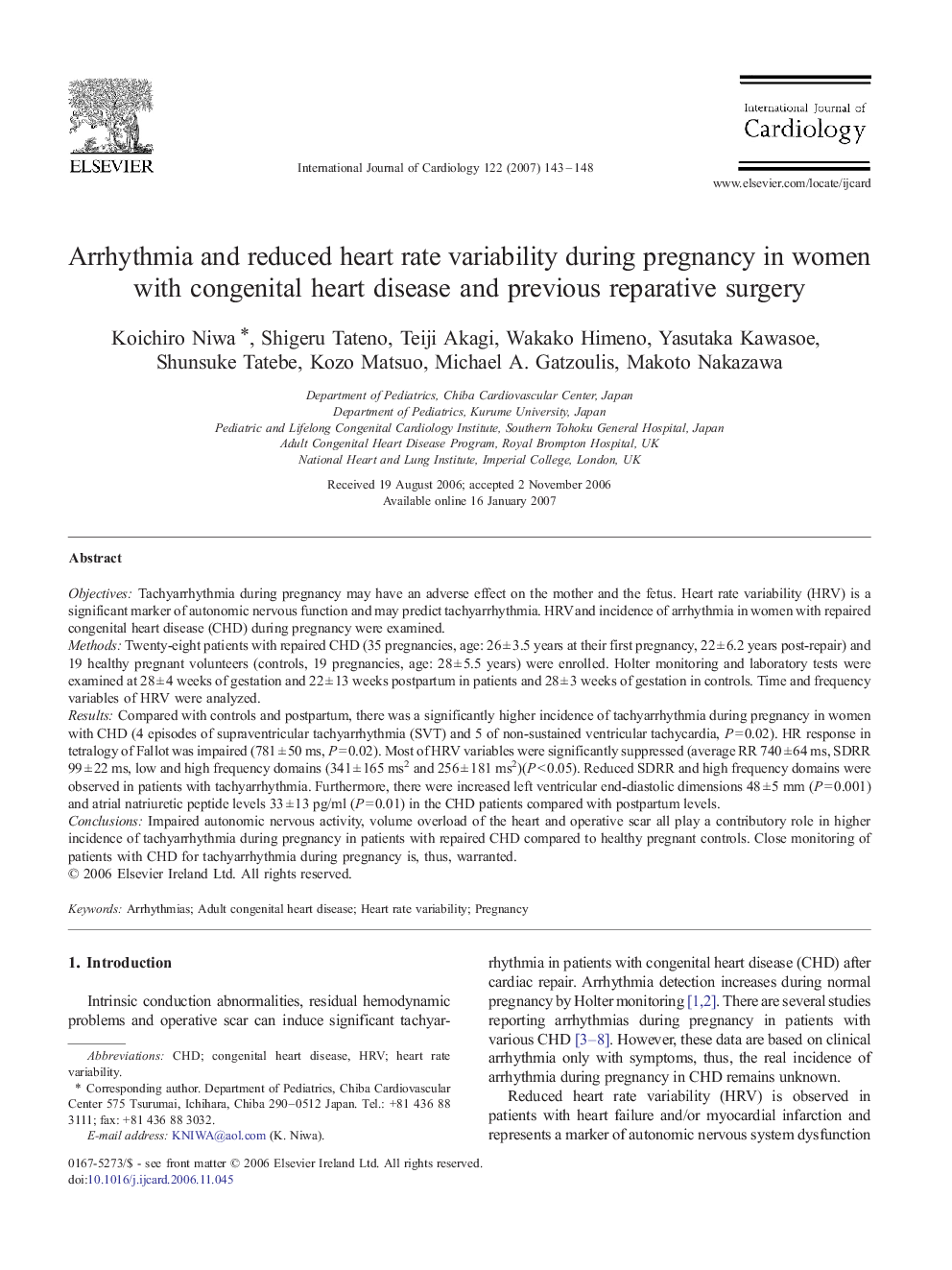| کد مقاله | کد نشریه | سال انتشار | مقاله انگلیسی | نسخه تمام متن |
|---|---|---|---|---|
| 2934652 | 1576361 | 2007 | 6 صفحه PDF | دانلود رایگان |

ObjectivesTachyarrhythmia during pregnancy may have an adverse effect on the mother and the fetus. Heart rate variability (HRV) is a significant marker of autonomic nervous function and may predict tachyarrhythmia. HRV and incidence of arrhythmia in women with repaired congenital heart disease (CHD) during pregnancy were examined.MethodsTwenty-eight patients with repaired CHD (35 pregnancies, age: 26 ± 3.5 years at their first pregnancy, 22 ± 6.2 years post-repair) and 19 healthy pregnant volunteers (controls, 19 pregnancies, age: 28 ± 5.5 years) were enrolled. Holter monitoring and laboratory tests were examined at 28 ± 4 weeks of gestation and 22 ± 13 weeks postpartum in patients and 28 ± 3 weeks of gestation in controls. Time and frequency variables of HRV were analyzed.ResultsCompared with controls and postpartum, there was a significantly higher incidence of tachyarrhythmia during pregnancy in women with CHD (4 episodes of supraventricular tachyarrhythmia (SVT) and 5 of non-sustained ventricular tachycardia, P = 0.02). HR response in tetralogy of Fallot was impaired (781 ± 50 ms, P = 0.02). Most of HRV variables were significantly suppressed (average RR 740 ± 64 ms, SDRR 99 ± 22 ms, low and high frequency domains (341 ± 165 ms2 and 256 ± 181 ms2)(P < 0.05). Reduced SDRR and high frequency domains were observed in patients with tachyarrhythmia. Furthermore, there were increased left ventricular end-diastolic dimensions 48 ± 5 mm (P = 0.001) and atrial natriuretic peptide levels 33 ± 13 pg/ml (P = 0.01) in the CHD patients compared with postpartum levels.ConclusionsImpaired autonomic nervous activity, volume overload of the heart and operative scar all play a contributory role in higher incidence of tachyarrhythmia during pregnancy in patients with repaired CHD compared to healthy pregnant controls. Close monitoring of patients with CHD for tachyarrhythmia during pregnancy is, thus, warranted.
Journal: International Journal of Cardiology - Volume 122, Issue 2, 15 November 2007, Pages 143–148